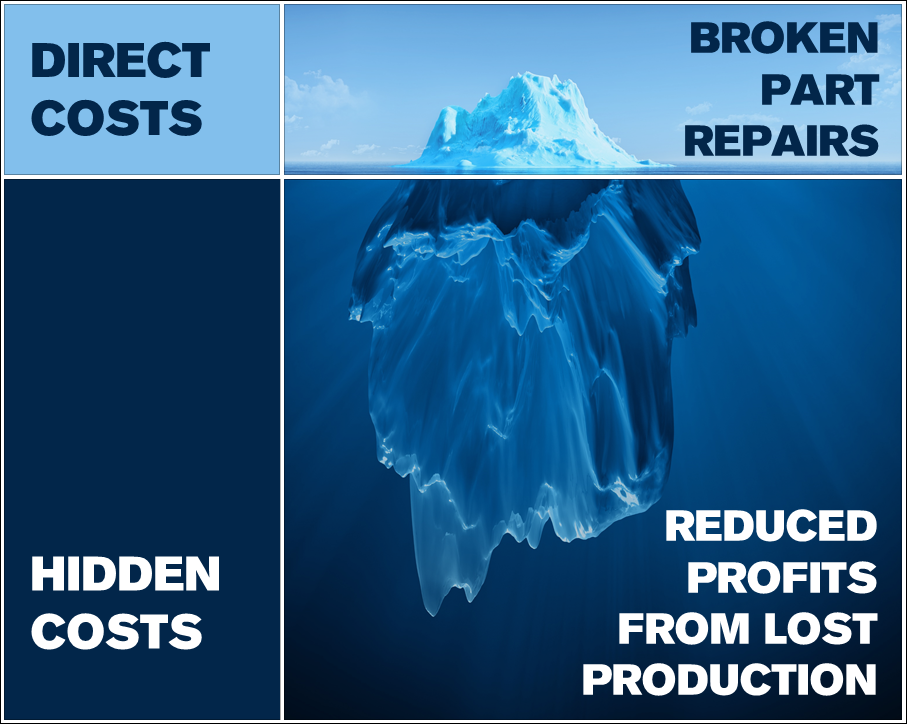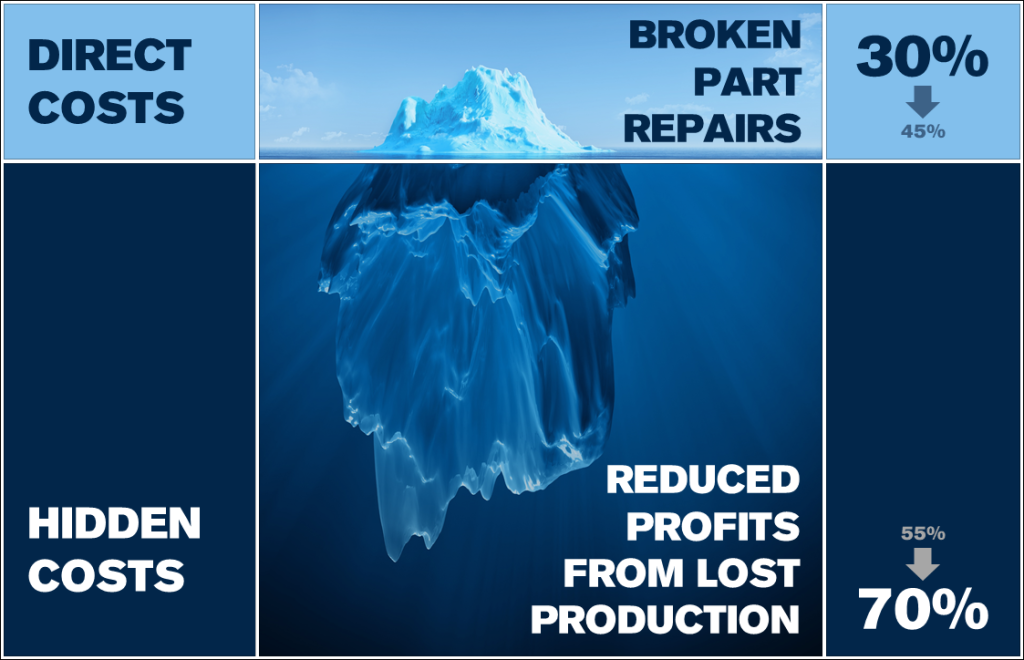In a chlor-alkali or sodium chlorate plant, a short circuit is a major incident that causes severe damage inevitably leading to an electrolyzer shutdown. When asked about the financial implications of repairing a short circuit, most plant professionals will immediately point to the costs of replacing damaged cell components. However, these direct repair costs represent only the tip of the iceberg, since the most significant short circuit repair costs are hidden, lurking just below the water surface. In this blog, we will explore the total costs of fixing a short circuit.
A short circuit can have major safety consequences: melted hoses and membranes, chlorine releases, and hydrogen fires (usually without igniting the chlorine and hydrogen mixture.) Typically, 3 to 5 cells will be damaged, depending where the short circuit occurred (anolyte or catholyte nozzle, sealing system or pan). The equipment replacement costs commonly range from about US $30k to $60k.
What are those short circuit hidden expenses, those underwater costs to reuse the iceberg analogy? They mainly result from the lost production during the unplanned shutdown required to fix the short circuit damage. The loss of profit incurred depends on many factors including: the price of chlorine and caustic soda, the variable production costs, the daily plant production volume, etc. For our estimate, we considered an average sized plant with 4 electrolyzers that produces around 140 kt of NaOH per year, combined with an unplanned shutdown to repair a damaged electrolyzer that lasts between 1.5 and 2 days. The reduced profits from this lost production amount to about US $60k to $80k!

| Plant Size (kton NAOH/year) | Unplanned Shutdown Duration (Days) | Average Broken Equipment Costs (USD) | Average Reduced Profits from Production Loss (USD) | Total Costs (USD) |
|---|---|---|---|---|
| 140 | 1-2 | $45,000 | $70,000 | $115,000 |
| 400 | 10+ | $45,000 | $500,000 | $545,000 |
To put things in perspective, let us consider a worst-case scenario: a large plant with 10 electrolyzers totalling 2000 cells that produces 400 ktons NaOH per year. Following the short circuit incident, if the government demands a root cause analysis to assess the plant safety, the defective electrolyzer can be stopped for nearly 10 days. The costs then become staggering: the equipment replacement expenditures stay in the US $30k to 60k range for the 3-5 damaged cells, but the reduced profits due to the 10 days of production loss rise to about $500k!
In summary, total losses due to short circuits comprise direct expenses for broken equipment replacement and “hidden costs” in the form of reduced profits due to production loss. Depending on the specific cause (anolyte nozzle, pan, etc), these costs range from an estimated amount of US $90k to $140k for an average size plant producing 140 ktons/year. Put another way, hidden costs due to a short circuit represent 55% to 70% of the total short circuit impact. It is worth mentioning that smaller plants producing less than 140 ktons/year would suffer fewer losses, and conversely for larger plants.
Because short circuits lead to a very fast LO individual cell voltage variation, these events can only be prevented with a safety system like EMOS® that can detect such a variation within milliseconds, triggering an immediate electrolyzer shutdown and thus preventing all damage. To find out more about the EMOS® Safety System, visit https://r2.ca/emos-sil2-safety-system/
For more information on how R2 can help, please contact us at marketing@r2.ca


